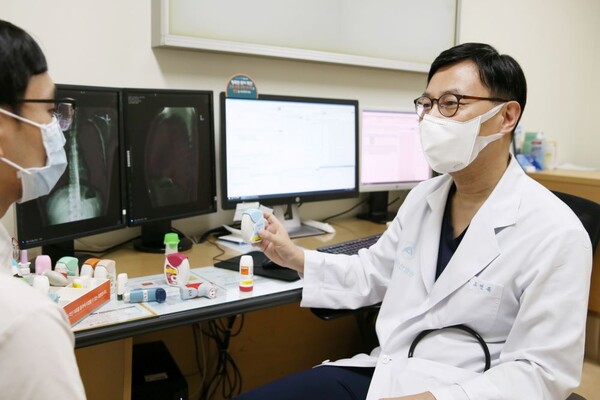Asthma, known to occur mostly in older people in their 60s and 70s, is rapidly increasing among 20-somethings, according to a study.

Professors Oh Yeon-mok, Lee Se-won, and Lee Jae-seung Lee of the Department of Pulmonology at Asan Medical Center (AMC) analyzed data from 92,000 people based on the National Health and Nutrition Survey from 2007 to 2018 to determine changes in asthma prevalence by age group.
They found that the prevalence of asthma among people in their 20s increased from 0.7 percent in 2007 to 5.1 percent in 2018.
Moreover, the prevalence of asthma in the 20s was the highest among all age groups, compared to 4.6 percent in the 70s and 3.8 percent in the 60s, which used to be the group most vulnerable to asthma in the past. In 2007, the prevalence of asthma among 20-somethings was 0.7 percent, marking the lowest rate along with 30-somethings.
In addition, although the cause of asthma has not been precisely identified, studies have shown that allergic rhinitis and atopic dermatitis are related to the development of asthma. However, the new study showed that the recent increase in allergic rhinitis and atopic dermatitis is highly correlated with the prevalence of asthma in Koreans in their 20s.
For instance, the prevalence of allergic rhinitis in the 20s increased from 17.2 percent in 2007 to 23.5 percent in 2018, and atopic dermatitis also increased significantly from 5.9 percent to 11.7 percent.
Throughout the study period, 44.6 percent of asthmatics in their 20s had allergic rhinitis, compared to 20.6 percent without asthma. Among asthmatics in their 20s, 25.3 percent had atopic dermatitis, compared to 8 percent without asthma.
The team also conducted a multivariate analysis to determine the association between allergic rhinitis and atopic dermatitis and factors known to be associated with asthma, such as gender, income, education, smoking experience, secondhand smoke environment, and obesity, among asthma patients in their 20s.
The results showed that only allergic rhinitis and atopic dermatitis were statistically significantly associated.
"Although reasons for the increase in the proportion of asthma patients in their 20s in Korea are not yet clear, the recent increase in asthma patients in their 20s seems to be related to allergic rhinitis and atopic dermatitis,” Professor Oh said. “We will continue paying attention and researching the causes.”
The findings were published in the recent issue of the Journal of Thoracic Disease.

